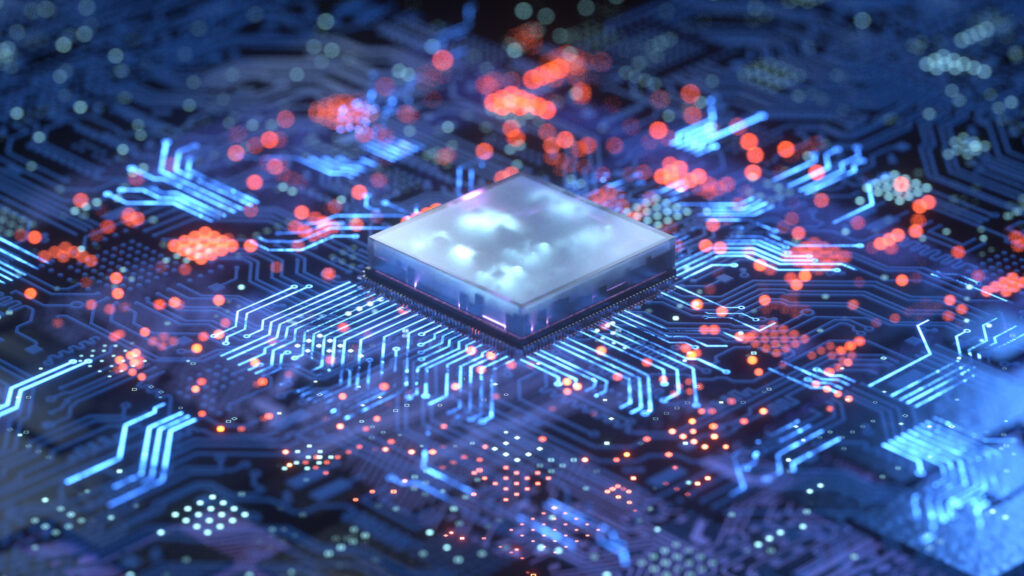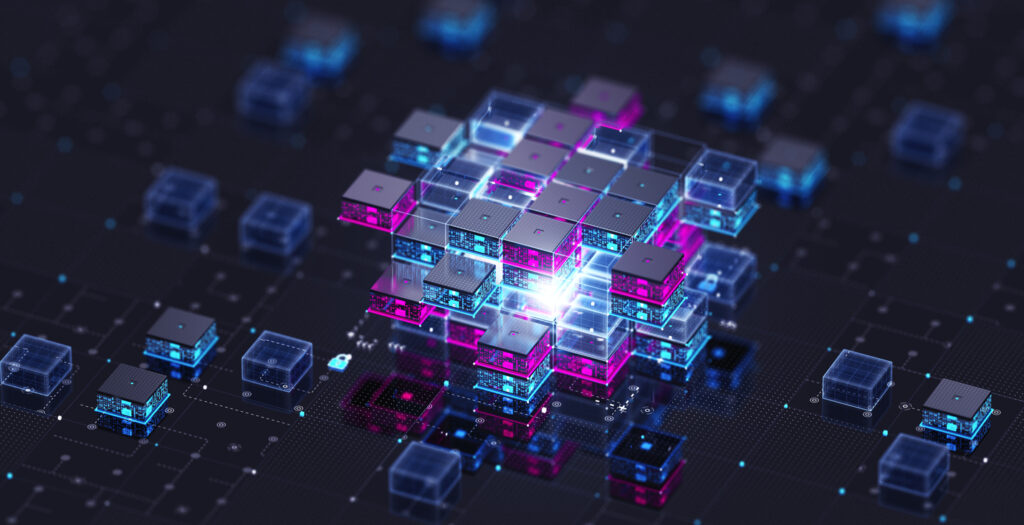Table of Contents

Imagine a tech startup diving into AI development, trying to balance the need for high-performance hardware with a tight budget. They want to train cutting-edge models in natural language processing and image recognition but are finding traditional GPU options too expensive. Enter AMD GPUs, a game-changing alternative that offers powerful capabilities without breaking the bank.
AMD has been quietly but steadily transforming the AI hardware scene. With their RDNA and CDNA architectures, these GPUs handle demanding workloads like deep learning and real-time inference with ease. Add to that the open-source ROCm ecosystem, which allows seamless integration with popular AI frameworks, and it’s clear why AMD GPUs are becoming the go-to choice for businesses looking to innovate without overspending. In this article, we’ll explore the performance, use cases, and strategic benefits of AMD GPUs, giving you the tools to decide if they’re the right fit for your AI journey.
The Role of the AMD GPU for AI Workloads
AMD GPUs have become increasingly prominent in Cloud AI workloads, offering powerful architecture, robust software ecosystems, and enterprise-focused advantages. With their advanced features and adaptability, AMD GPUs are driving innovation in AI and machine learning applications across industries.
Architecture and Key Features
AMD GPU for AI options are built on the RDNA and CDNA architectures, designed to optimize performance for AI and compute-intensive workloads. Key architectural features are outlined in the table below:
| Feature | Description |
| High Parallelism | Enables efficient handling of large-scale matrix operations, essential for deep learning training and inference. |
| Infinity Fabric | Provides high-speed interconnects between GPU cores and memory, reducing latency and maximizing throughput. |
| HBM2e Memory | High-bandwidth memory supports faster data processing, critical for AI model training and large datasets. |
| FP16 and INT8 Support | Optimized precision levels for AI workloads, delivering faster computations while maintaining accuracy. |
These features allow AMD GPUs to deliver excellent performance at competitive price points, making them a strong contender in the AI hardware space.
Uncover the latest trends in AI cloud computing and how to leverage the power of AI.Ebook: Navigating AI Cloud Computing Trends

AMD’s ROCm Ecosystem and Support for AI Frameworks
The ROCm (Radeon Open Compute) ecosystem is AMD’s open-source platform designed to support AI and machine learning workloads. It provides developers with tools and libraries to build, optimize, and deploy AI models.
Key components of the ROCm ecosystem include:
- MIOpen: A library optimized for deep learning, providing highly efficient GPU-accelerated primitives like convolutions and activation functions.
- RCCL: A library for multi-GPU communication, enabling distributed training and scaling across clusters.
- HIP (Heterogeneous-Compute Interface for Portability): Allows developers to port CUDA-based code to AMD GPUs with minimal modifications.
- Support for AI Frameworks: ROCm integrates seamlessly with popular frameworks like TensorFlow, PyTorch, and ONNX, enabling developers to leverage AMD GPUs without significant workflow changes.
The open-source nature of ROCm fosters collaboration and adaptability, ensuring that developers have the flexibility to tailor AI solutions to specific needs.
Enterprise Advantages of AMD GPUs in AI Applications
For enterprises, AMD GPUs offer several key benefits in AI applications:
- Cost-Effectiveness: AMD GPUs deliver high performance at a lower cost compared to some competitors, making them attractive for organizations with budget constraints.
- Energy Efficiency: AMD’s architecture focuses on power efficiency, reducing operational costs for AI infrastructure.
- Scalability: With features like Infinity Fabric and ROCm libraries, AMD GPUs support scalable solutions for distributed training and inference across multi-GPU environments.
- Open Ecosystem: The open-source nature of ROCm provides enterprises with greater flexibility and control over their AI workloads, avoiding vendor lock-in.
- Diverse Use Cases: AMD GPUs are well-suited for a range of AI applications, including natural language processing (NLP), computer vision, and autonomous systems, making them versatile across industries.
How AMD AI GPUs Stack Up Against Competitors
AMD and NVIDIA are two leading players in the GPU market for AI workloads, each offering unique strengths in performance, pricing, and ecosystem support. Below, we compare AMD and NVIDIA AI GPUs across key metrics relevant to AI applications to help enterprises make informed decisions.
AMD vs. NVIDIA GPU for AI: Comparing Performance, Price, and Ecosystem Support
| Metric | AMD GPUs | NVIDIA GPUs |
| Tensor Operations | Efficient tensor processing with FP16 and INT8 support; competitive for most AI workloads. | Tensor Cores designed specifically for AI, offering unmatched performance for matrix-heavy computations. |
| Energy Efficiency | Focus on power-efficient architectures, reducing operational costs. | Generally more power-intensive but optimized for high-performance computing workloads. |
| Scalability | Infinity Fabric supports multi-GPU scaling; ROCm enables distributed AI training. | NVLink interconnect ensures seamless scaling across multiple GPUs in large clusters. |
| Ecosystem Support | ROCm is open-source and integrates with frameworks like PyTorch and TensorFlow but requires more setup. | CUDA is widely supported, well-documented, and seamlessly integrates with most AI frameworks. |
| Price | More cost-effective, offering competitive performance at a lower price point. | Higher-priced GPUs with cutting-edge technology tailored for enterprise-grade AI applications. |
Key Metrics
- Tensor Operations
NVIDIA AI GPUs excel in tensor operations due to their dedicated Tensor Cores, which provide superior performance for matrix-heavy AI tasks like deep learning. AMD GPUs, while efficient with FP16 and INT8 precision, are generally less specialized but still highly capable for most AI applications. - Energy Efficiency
AMD focuses on energy-efficient designs, making them an attractive option for enterprises aiming to reduce operational costs. NVIDIA GPUs, though powerful, tend to consume more energy but are optimized for maximum performance. - Scalability
AMD GPUs leverage Infinity Fabric for multi-GPU scaling and ROCm libraries for distributed AI training. NVIDIA GPUs, with their NVLink interconnect and mature ecosystem, offer superior scalability in large-scale deployments. - Ecosystem Support
NVIDIA’s CUDA ecosystem is the industry standard, providing seamless integration with AI frameworks and extensive developer resources. AMD’s ROCm is gaining traction but still requires more adoption and familiarity among developers.
Considerations for Enterprises Choosing Between AMD and NVIDIA
When deciding between AMD and NVIDIA GPUs for AI workloads, enterprises must carefully evaluate several key factors that align with their business goals, operational needs, and infrastructure priorities, including AI performance in the cloud. Below is a detailed exploration of critical considerations.
- Budget Constraints
AMD GPUs are renowned for their cost-effectiveness, offering competitive performance at a lower price point than NVIDIA counterparts. This makes AMD an attractive option for enterprises operating under budget constraints or those seeking scalable solutions without excessive capital expenditure. For instance, organizations deploying large-scale training clusters can achieve substantial savings by selecting AMD GPUs, which deliver reliable performance for most AI applications. However, while cost-efficient, enterprises should assess whether AMD GPUs meet the specific computational demands of their target workloads. - Performance Requirements
For enterprises requiring peak performance in advanced AI tasks, NVIDIA GPUs often hold an edge due to their dedicated Tensor Cores. These cores are engineered for AI operations, particularly in matrix-heavy computations like deep learning and neural network training. Applications such as generative AI, real-time 3D rendering, and large-scale natural language processing (NLP) tend to benefit from NVIDIA’s ecosystem, which is optimized for high computational loads. Conversely, AMD GPUs, while highly capable, may require additional fine-tuning or optimization for certain extreme performance tasks. - Open-Source Preference
AMD’s ROCm ecosystem offers significant flexibility and avoids vendor lock-in, which is advantageous for organizations prioritizing open-source solutions. ROCm’s support for popular AI frameworks like PyTorch and TensorFlow ensures compatibility with existing workflows while providing enterprises with greater control over software stack customization. This is particularly appealing for businesses in research or public sectors where transparency and adaptability are valued. However, ROCm adoption requires more technical expertise compared to NVIDIA’s more user-friendly CUDA platform. - Energy Consumption
AMD GPUs are designed with energy efficiency in mind, making them an ideal choice for enterprises focused on reducing operational expenses or meeting sustainability goals. The power-efficient architecture of AMD GPUs allows organizations to minimize electricity costs associated with running AI workloads at scale. This becomes particularly critical in data centers or industries with strict energy consumption policies. NVIDIA GPUs, while performance-driven, tend to consume more power, which may lead to higher operational costs over time, though they offer unparalleled performance in return. - Existing Ecosystems
Enterprises already invested in NVIDIA’s CUDA ecosystem may find it more practical to continue leveraging NVIDIA GPUs due to their widespread compatibility, extensive documentation, and developer familiarity. CUDA is deeply integrated into many AI frameworks and third-party libraries, simplifying the development process and reducing transition costs. Migrating from NVIDIA to AMD, while feasible, often requires re-optimization of workflows and retraining of teams to adapt to ROCm, which could offset short-term cost savings. For organizations already proficient with CUDA, staying within NVIDIA’s ecosystem may ensure consistency and efficiency.
Best AMD GPUs for AI Applications

AMD offers a range of GPUs that cater to various AI workloads, from high-performance applications to budget-friendly options. Below, we detail the specifications, price ranges, and specific AI tasks each GPU handles effectively.
AMD Radeon RX 7900 GRE
- Specifications: Built on the RDNA 3 architecture, 16GB GDDR6 memory, 5120 stream processors, and a boost clock of up to 2.4 GHz.
- Price Range: $599–$699 (approx.).
- AI Proficiency: The RX 7900 GRE is optimized for tasks such as natural language processing (NLP), real-time inference, and AI-assisted creative workflows. Its robust memory bandwidth ensures smooth handling of large datasets, making it suitable for machine learning training and inference.
AMD Radeon RX 7900 XTX
- Specifications: RDNA 3 architecture, 24GB GDDR6 memory, 6144 stream processors, and a boost clock of up to 2.5 GHz.
- Price Range: $899–$999 (approx.).
- AI Proficiency: The RX 7900 XTX excels in heavy AI workloads like deep learning model training, computer vision tasks, and advanced simulations. Its large memory and high processing power are ideal for handling resource-intensive neural networks and 3D rendering for AI applications.
AMD Radeon RX 6800 XT
- Specifications: RDNA 2 architecture, 16GB GDDR6 memory, 4608 stream processors, and a boost clock of up to 2.25 GHz.
- Price Range: $549–$649 (approx.).
- AI Proficiency: The RX 6800 XT is versatile for mid-level AI workloads, such as image recognition, generative AI, and reinforcement learning. Its efficient architecture supports multitasking in AI pipelines while maintaining energy efficiency.
AMD Radeon RX 7600 (Budget)
- Specifications: RDNA 3 architecture, 8GB GDDR6 memory, 2048 stream processors, and a boost clock of up to 2.6 GHz.
- Price Range: $269–$299 (approx.).
- AI Proficiency: The RX 7600 is suitable for entry-level AI tasks, including small-scale model training, basic data analysis, and AI-driven content creation. Its affordability makes it a good choice for students, researchers, or startups with limited budgets.
AMD Radeon RX 6600 XT (Budget)
- Specifications: RDNA 2 architecture, 8GB GDDR6 memory, 2048 stream processors, and a boost clock of up to 2.4 GHz.
- Price Range: $229–$269 (approx.).
- AI Proficiency: The RX 6600 XT is tailored for lightweight AI tasks, such as AI-powered media editing and simple inference models. Its energy-efficient design ensures smooth operation in small-scale applications without compromising performance.
AMD Radeon PRO Series
- Specifications: Varies by model; generally includes high-end features like ECC memory, larger VRAM (up to 32GB), and professional-grade optimizations. For example, the AMD Radeon Pro W5700, with up to 8GB of GDDR6 memory, 2304 stream processors, and 8.89 TFLOPS of FP32 performance, is useful for CAD and AI-driven design optimizations in mechanical and structural engineering.
- Price Range: $1,000–$3,500 (approx.).
- AI Proficiency: The Radeon PRO series is built for enterprise-grade AI tasks, including high-precision data modeling, AI-driven simulations, and professional AI-assisted design (e.g., CAD, 3D rendering). Its reliability and precision make it a go-to for industries like healthcare, engineering, and film production.
AI Applications on AMD GPUs

AMD GPUs are increasingly being used for AI applications, particularly in generative AI tasks like Stable Diffusion and industry-specific solutions across healthcare, finance, and manufacturing. Their powerful architecture and open-source ROCm ecosystem make them a strong choice for such workloads.
Stable Diffusion and Generative AI on AMD GPUs
- Overview: Stable Diffusion is a generative AI model used for creating high-quality images based on textual descriptions. AMD GPUs, with their support for FP16 and INT8 precision, handle these compute-intensive tasks efficiently.
- Use Case: AMD GPUs can generate realistic images for marketing campaigns, creative design, and virtual environments. The ROCm ecosystem ensures compatibility with frameworks like PyTorch, enabling seamless deployment of models like Stable Diffusion.
Generative AI Use Cases
Healthcare
- Medical Imaging:
Generative AI models create synthetic medical images to enhance machine learning training datasets. For example, synthetic X-rays, MRIs, or CT scans can simulate rare medical conditions that are underrepresented in real-world data. These augmented datasets improve the robustness and accuracy of diagnostic AI models, enabling better disease detection and prediction in radiology and pathology. - Drug Discovery:
Generative AI accelerates the drug discovery process by simulating molecular structures and predicting viable compounds with desired properties. This reduces the need for extensive physical testing and experiments. For instance, AI-generated molecules can be screened virtually for potential drug efficacy, significantly lowering costs and time-to-market for pharmaceutical development. - Personalized Treatment Plans:
Generative models simulate patient-specific treatment pathways by analyzing individual medical histories, genetic profiles, and physiological data. For example, AI can generate customized cancer treatment regimens by modeling how a specific patient’s tumor might respond to different therapies. This personalized approach improves treatment outcomes and reduces side effects.
Finance
- Synthetic Data Generation:
Generative AI creates synthetic datasets that mimic real financial data, preserving data privacy while enabling robust model training. For instance, AI-generated transaction data can be used to train fraud detection systems without exposing sensitive customer information, ensuring compliance with data protection regulations like GDPR. - Risk Assessment Models:
Generative models produce hypothetical financial scenarios to evaluate potential risks. For example, AI can simulate market crashes, interest rate fluctuations, or credit default scenarios, enabling institutions to stress-test their portfolios and develop strategies for risk mitigation and resilience. - Customer Engagement:
AI-driven generative models create personalized communication and content for customer support, enhancing the user experience in banking and insurance. For instance, chatbots powered by generative AI can tailor responses based on a customer’s financial history and preferences, offering proactive solutions or product recommendations.
Manufacturing
- Product Design:
Generative AI optimizes the design process by creating multiple prototypes and design alternatives based on specified parameters, such as material constraints, performance goals, and cost. For example, in automotive manufacturing, AI can generate lightweight yet durable components that meet safety standards while reducing production costs. - Predictive Maintenance:
Generative models simulate machine performance under various operational conditions to predict potential failures. This allows manufacturers to schedule maintenance proactively, minimizing downtime and extending equipment lifespan. For example, AI can generate scenarios predicting how temperature fluctuations or wear-and-tear might affect a machine’s performance. - Smart Factories:
Generative AI analyzes and optimizes factory layouts and workflows to enhance efficiency. For instance, AI can model production line configurations that maximize throughput while minimizing waste and energy consumption. By simulating various operational scenarios, manufacturers can identify bottlenecks and implement solutions without disrupting existing workflows.
Why AMD GPUs Are Suited for Generative AI
- High Parallelism: AMD GPUs excel at large-scale matrix computations required for generative tasks.
- FP16 and INT8 Precision: These precision modes accelerate model inference while maintaining accuracy.
- ROCm Ecosystem: Open-source libraries like MIOpen provide deep learning primitives, making it easy to deploy generative models.
- Cost Efficiency: AMD GPUs offer competitive performance at lower price points, making them ideal for budget-conscious AI deployments.
AMD GPU Cloud and Enterprise Adoption
Adopting an AMD AI GPU in enterprise IT infrastructures requires careful planning to ensure seamless integration and optimal performance for AI workloads. The process begins with assessing the existing IT environment to identify workloads and applications that would benefit from AMD GPU acceleration. Enterprises must then select appropriate hardware, such as AMD GPUs optimized for AI tasks, ensuring compatibility with existing systems. Setting up the necessary software stack, including the ROCm ecosystem and any relevant AI frameworks, is essential to enable developers to build, train, and deploy AI models effectively. Testing and validation in a controlled environment should follow, ensuring that the deployment meets performance expectations before scaling across the organization.
When deploying an AMD AI GPU in the cloud, enterprises need to evaluate compatible cloud service providers that offer AMD-based cloud instances (NZO offers AMD-supported cloud environments). Integrating these instances with on-premises systems allows for a hybrid approach, leveraging the scalability of the cloud for AI while maintaining control over critical workloads. This hybrid model ensures flexibility and cost-efficiency, enabling enterprises to scale resources based on demand.

Enterprise Strategies to Maximize ROI with AMD GPUs for AI
To maximize return on investment with AMD GPUs for AI, enterprises must focus on aligning GPU deployments with their specific business objectives. Prioritizing high-impact use cases such as predictive analytics, generative AI, or real-time inference ensures that GPU resources deliver tangible benefits. Enterprises should invest in training their IT teams and data scientists to leverage the full potential of the ROCm ecosystem, which provides tools for optimizing AI workloads on AMD GPUs.
Establishing scalable architectures is another critical strategy. By leveraging AMD’s Infinity Fabric and ROCm libraries, enterprises can scale AI workloads across multiple GPUs or hybrid environments without compromising performance. Proactive monitoring of GPU performance and energy consumption is also essential to ensure ongoing cost-efficiency and to identify optimization opportunities.
Finally, fostering partnerships with AMD and third-party vendors ensures access to the latest innovations, support, and tailored solutions that meet the organization’s evolving needs. By adopting a strategic and informed approach, enterprises can fully harness the capabilities of AMD GPUs to drive AI initiatives and achieve long-term success.
Conclusion
As we’ve seen, AMD GPUs aren’t just a budget-friendly alternative—they’re a robust solution for tackling some of the most demanding AI workloads. Whether it’s generating synthetic medical images, designing smarter factory layouts, or predicting financial risks, AMD’s combination of powerful hardware and open-source software is opening doors for businesses of all sizes.
So, whether you’re that startup in our story or an established enterprise looking to scale AI operations, an AMD AI GPU offers a compelling mix of performance, flexibility, and cost savings. By embracing their capabilities, you’re not just keeping up with the AI revolution—you’re positioning yourself to lead it. The next step? Dive into AMD’s ecosystem, test the waters, and see how it can transform your AI ambitions into reality.
Need to optimize your cloud environment to handle your AI endeavors? Reach out to NZO Cloud today for a free trial.
While a vital tool, HPC deployments can come with challenges. Learn how to overcome them.Uncover the latest trends in AI cloud computing and how to leverage the power of AI.


